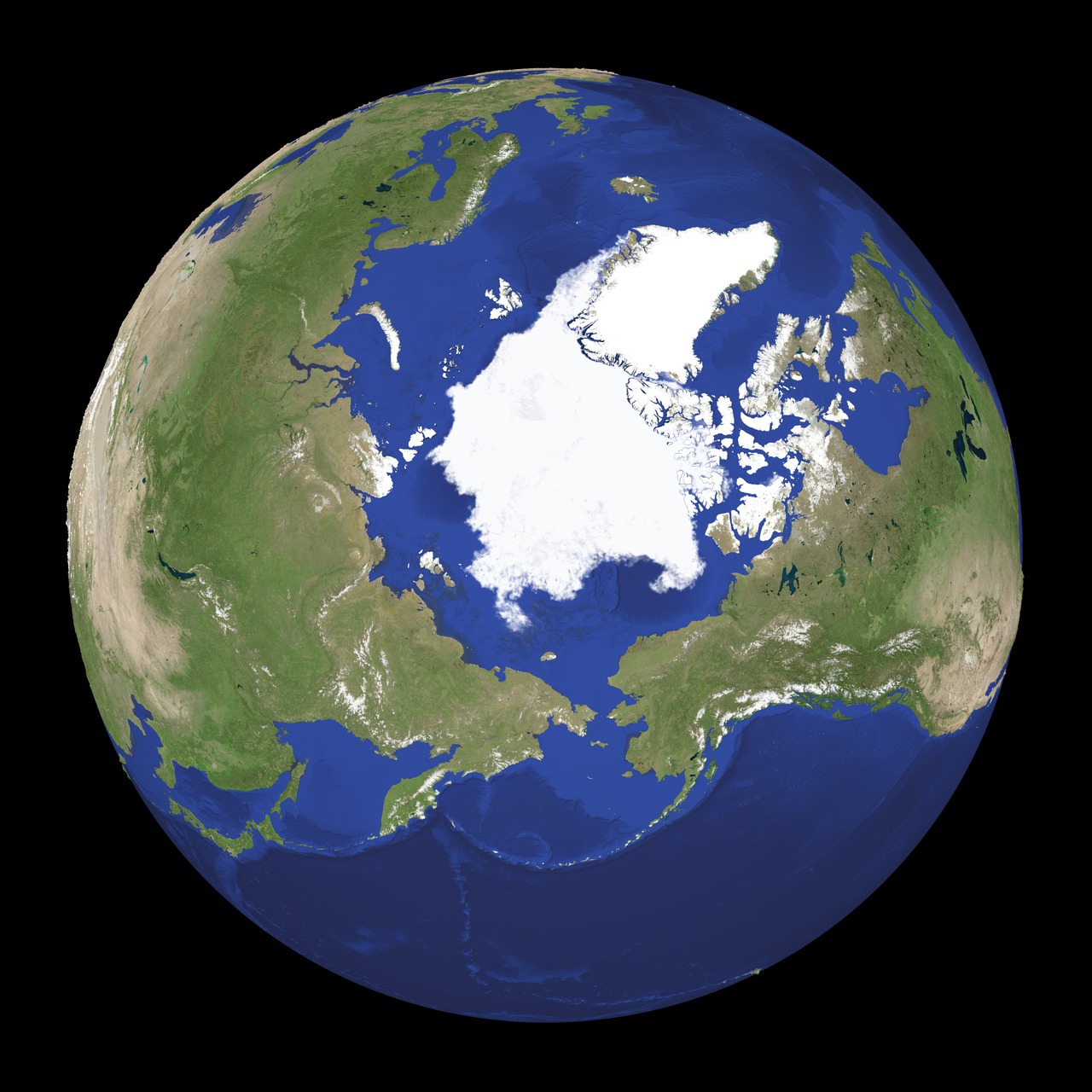2011.10.04
2011 GIC Weekly Report Vol.9
Northeastern Passage Expected to Close This Week
Topics of the Week
As we enter October, ice in the Arctic Sea continues to expand rapidly. Because of this, both the northeastern and northwestern passages of the Polar Route are getting near closing time. Currently in the northeastern passage, ice extends 50km out into the sea north of the New Siberian Islands (Novosibirskiye) which we assume should be obstructing the passage. Based on the I-SEE Engine model prediction, ice is expected to expand anew, and completely block the passage along the northern coast around the 8th.
Meanwhile along the northwestern passage, ice extending in the Larsen Sound should block the passage over the next 1~2 weeks.
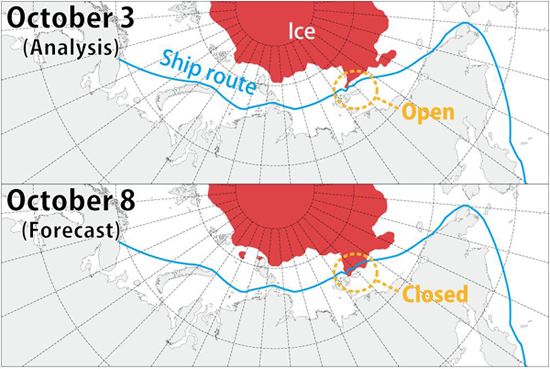 Fig 1: Sea Ice Extent as of October 3rd (above), Prediction for the 8th (below).
Fig 1: Sea Ice Extent as of October 3rd (above), Prediction for the 8th (below).Red areas represent ice, blue line illustrates current Polar Route.
Sea Ice Extent
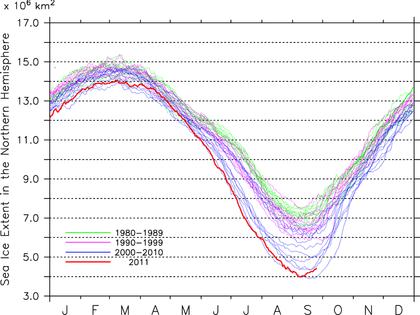
|
Arctic Western Arctic Eastern Arctic |
Fig 2: Arctic Sea Ice Extent(Click to Expand)
(a)Total Arctic Sea Ice Extent (b) Arctic Sea Ice Extent (Western Hemipshere) (c)Arctic (Eastern Hemisphere)
Figure 2a illustrates the progression of the sea ice extent in the Arctic. As of September 30th, the total area of ice coverage is 4.6 million square kilometers, 200,000 km2 more than last week on the 26th. The ice-coverage area in the eastern hemisphere is 1.8 mil. km2, while the coverage in the western hemisphere is 2.8 mil. km2 and progressively increasing.
Figure 3 illustrates the latest sea ice extent data on the Arctic Sea as seen by satellite. In recent years, ice would be extending out into the Vilkitsky Strait during this period, but in this season it is clear that this has not happened yet. However, we have verified that ice is increasing in the East Siberian Sea and around the Greenland Sea.
On the Canadian Arctic Archipelago, we can see that ice continues to progressively increase from last week, extending outward from Parry Channel as its center.
Sea Ice Conditions along Polar Routes
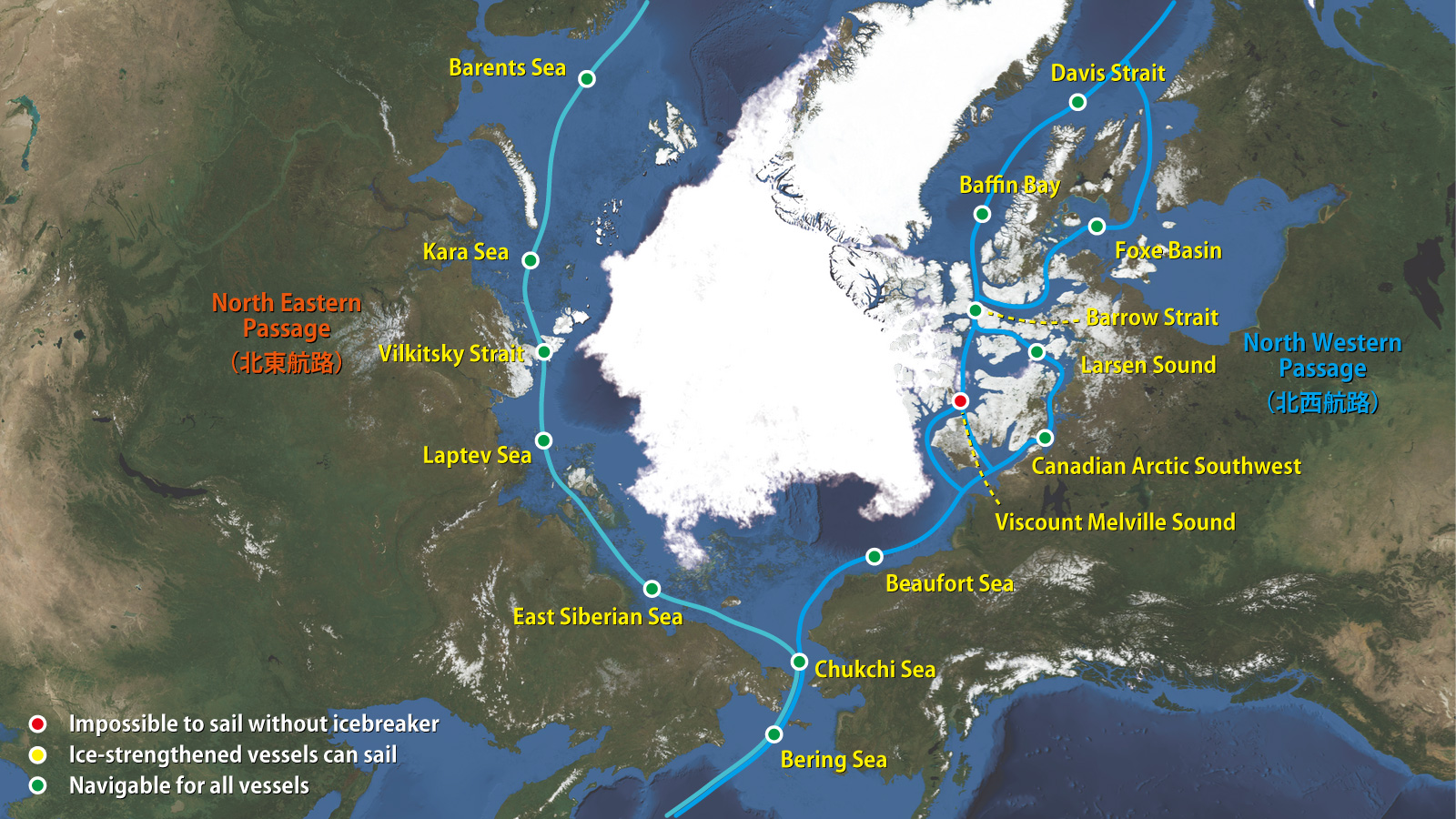
Fig. 4: Sea Ice Conditions along Northeastern/Northwestern passsages
Figure 4 shows open and obstructed areas on the northeast (Siberian side) and northwest (Canadian side) of the passage.
Continuing over from last week, the southern route of the northeastern and northwestern passages continues to remain open. Along the northeastern passage, ice rapidly increasing in the East Siberian Sea means that we should expect the passage to be obstructed within the coming days. Meanwhile, along the southern route of the northeastern passage, ice is expanding in coastal areas of the Beaufort Sea and Larsen Sound. In particular, ice concentration on the coast of Victoria Island has increased to 7-8 tenths. We expect this route to be obstructed within the next few days, too.
I-SEE Model Predictions
Figure 5 is the prediction model output from Weathernews' I-See Engine. As seen in the illustration, ice around the north coast of the New Siberian Islands (Novosibirskiye) is expected to completely obstruct the northeastern passage around the 8th of October, effectively closing it to marine traffic. In this event, the northeastern passage will have been open for two months this year, which will make it the longest navigable period for this route in history. As for the northwestern passages, low concentration ice will expand at several regions in the Canadian Arctic Archipelago, which we anticipate will close the route in the first half of October.
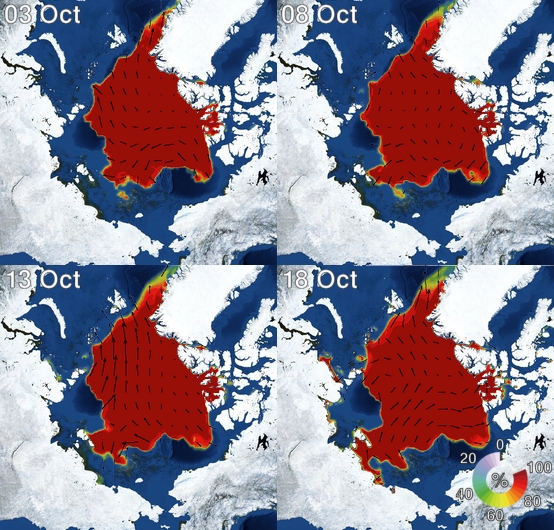
Fig 5: Forecast from Sea Ice Prediction model (Weathernews I-See Engine)


